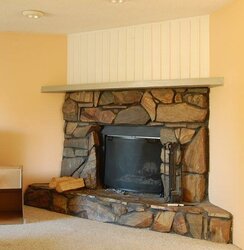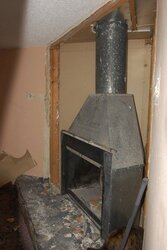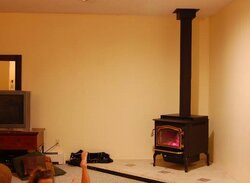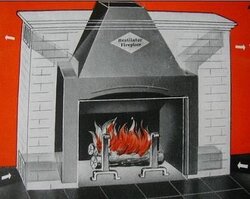I'm settled on a Century Heating CW2900 (2.4 ft^2 firebox) insert and was about to start demo on the steel fireplace liner in my 1950's era Heatiliator; but then I modeled the basic dimensions and need to pause.
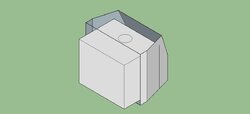
What I have drawn is the basic stove inside the existing steel liner, (which is in working condition). I pushed the insert all the way back until interference occurred and was surprised to see the result. I only need to move back an additional 2.5". I have 3" until the back of the stove touches the sloping back of the firebox.
So my question is, how much of the old box do you think I should remove? I'm leaning towards just enough of the side walls to get my 3" and stuff the surrounding gaps with Roxul. Is there a benefit to removing more?

What I have drawn is the basic stove inside the existing steel liner, (which is in working condition). I pushed the insert all the way back until interference occurred and was surprised to see the result. I only need to move back an additional 2.5". I have 3" until the back of the stove touches the sloping back of the firebox.
So my question is, how much of the old box do you think I should remove? I'm leaning towards just enough of the side walls to get my 3" and stuff the surrounding gaps with Roxul. Is there a benefit to removing more?
Last edited by a moderator:


